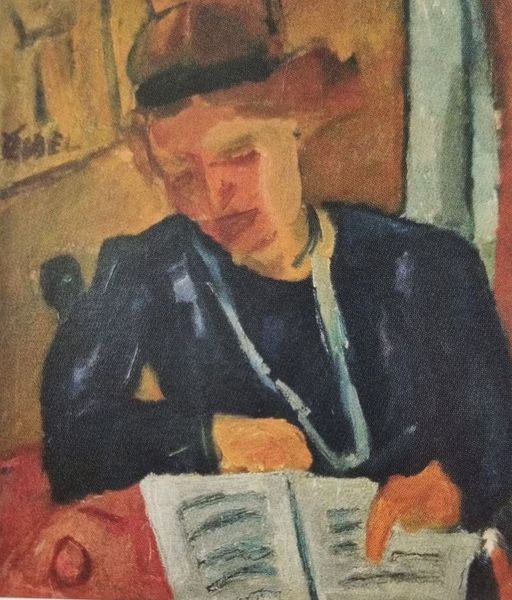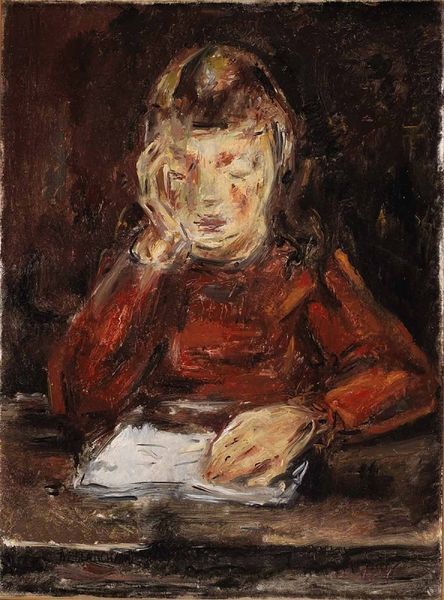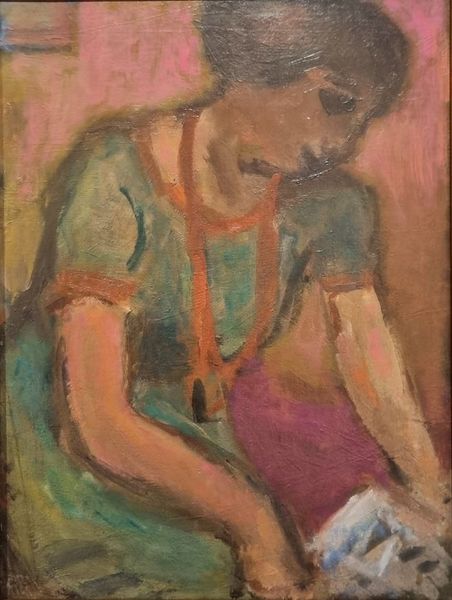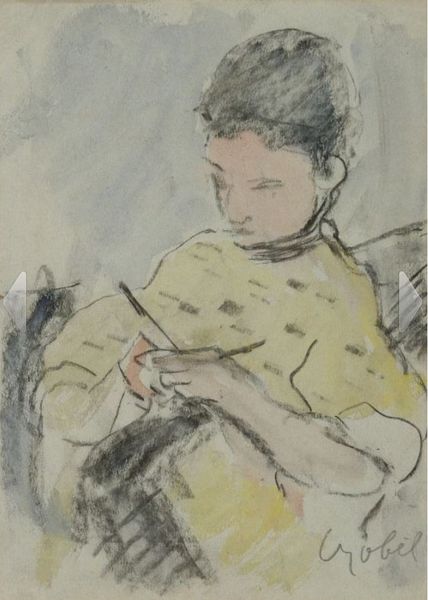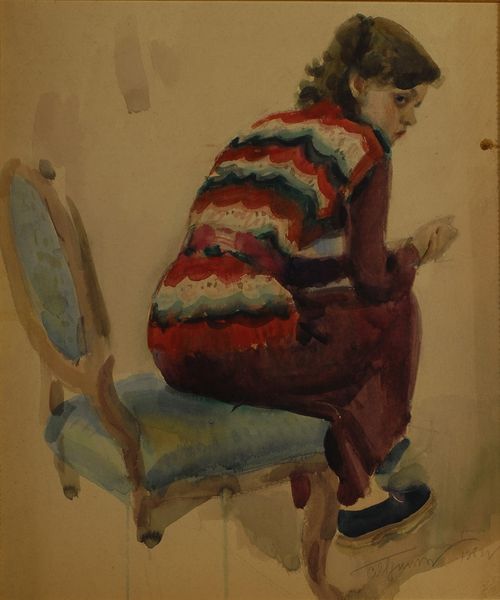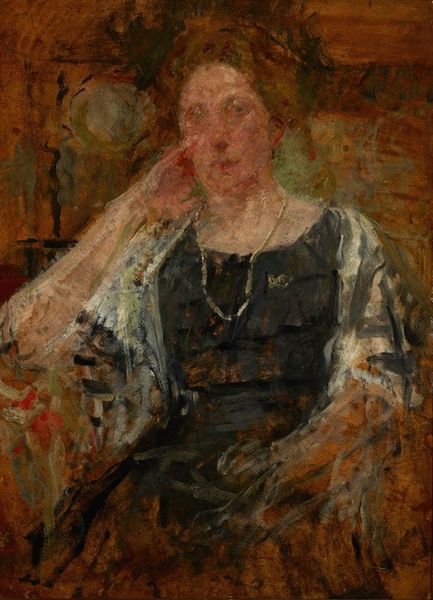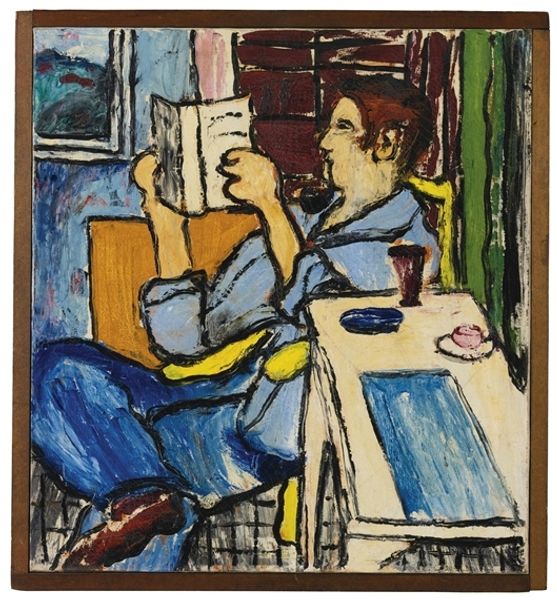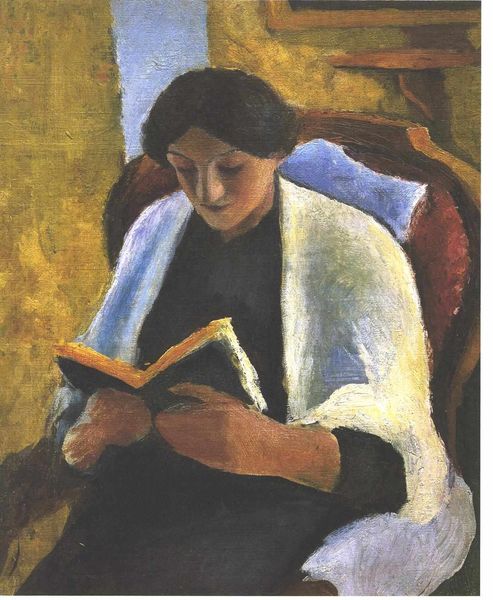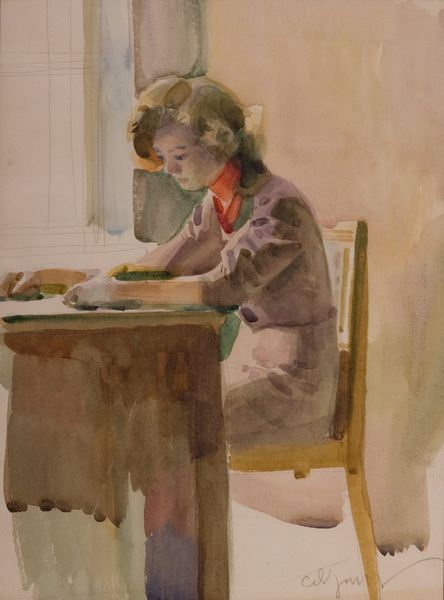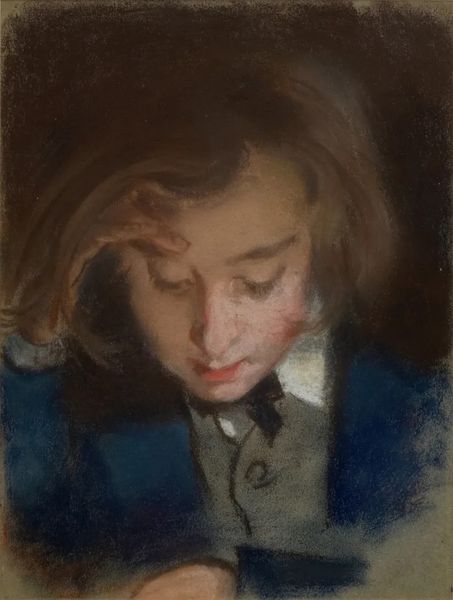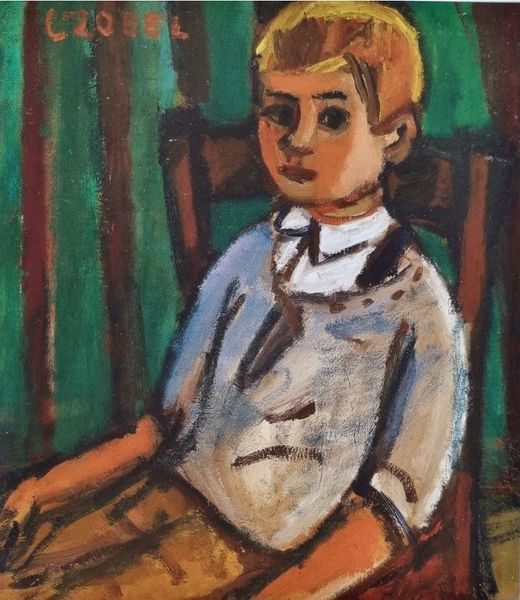
painting, oil-paint
#
portrait
#
contemporary
#
painting
#
oil-paint
#
oil painting
#
genre-painting
#
modernism
#
fine art portrait
Copyright: Oleg Holosiy,Fair Use
Curator: Oleg Holosiy painted "Tanya. XX Century" in 1989, using oil on canvas. It’s a genre painting with portrait elements. Editor: There's a captivating sense of quiet melancholy, wouldn't you agree? The composition is straightforward—seated figure against a muted background—but the application of the paint is fascinating. The visible brushstrokes add incredible depth and texture to an otherwise unassuming scene. Curator: Absolutely. Holosiy's choice of color reinforces that emotional reading; the blues and browns are far from vibrant. I’m more interested in the painting's construction of the subject: note the gaze averted downward to a sheet of paper. This positioning constructs Tanya as withdrawn and reflective. Her posture could convey either absorption or despondency, depending on your interpretation. Editor: That downturned gaze speaks volumes about gendered expectations and the act of labor in Eastern European identity construction during a time of great social shift. The girl’s work may allude to both a submission to traditional practices—given her age and gender—or a step forward, a way of laying claim to her identity during a chaotic era in the USSR’s final moments. Is her head down in deference to these practices or defiance of their imposition? Curator: Or, consider her alienation? She's clearly wearing headphones of some kind. We can interpret that from a purely formalist perspective: how that choice subtly isolates her visually. We can contrast the warm and muddy coloration with that barrier, both constructed by line and implicitly built through implied use. This dichotomy creates a spatial, yet emotional divide within the painting. Editor: You see structure, I see resistance to hegemonic norms. Let us appreciate how Holosiy situates Tanya's subjectivity in the liminal spaces, at the point where private thought and public presentation intertwine. Curator: It does speak to a pivotal era, that tension between tradition and modernity that courses through Holosiy’s composition and style. Thanks for sharing that insight, especially how we can read it through Tanya’s positioning. Editor: And thank you for laying the foundation by describing Holosiy's composition so succinctly; seeing how color and form dictate not just the scene but how to understand its greater relevance—that's crucial.
Comments
No comments
Be the first to comment and join the conversation on the ultimate creative platform.
